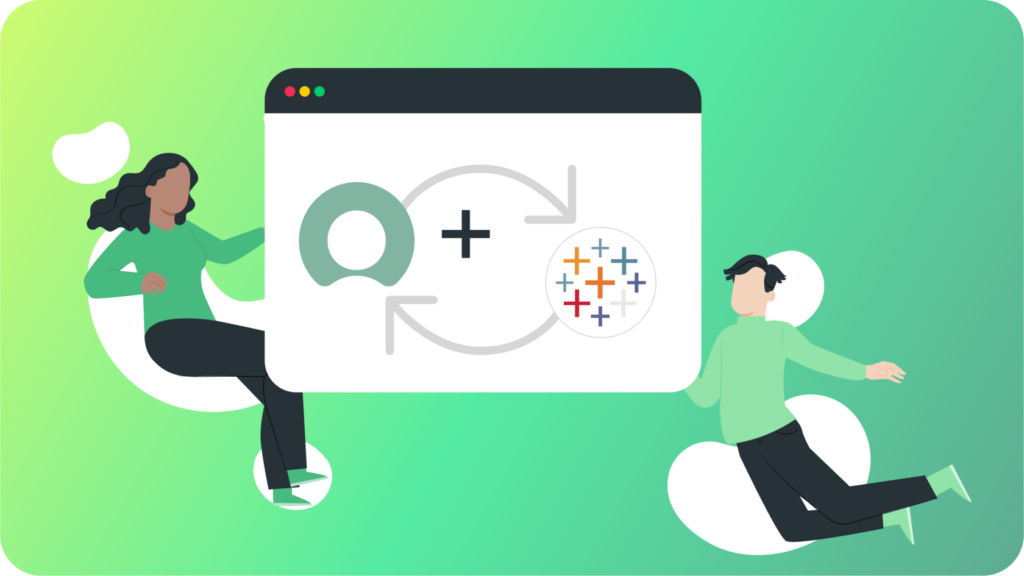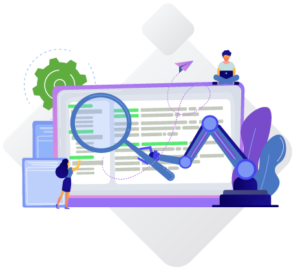Enhance Data Analysis: Seamless Tableau ServiceNow Integration with the Tableau ServiceNow Connector

Enhance Data Analysis: Seamless Tableau ServiceNow Integration with the Tableau ServiceNow Connector
ServiceNow stands as a top-tier cloud service, offering complete solutions for businesses engaged in efficient service management. While ServiceNow provides built-in reporting features, some companies using the platform might require assistance with intricate reporting needs or prefer an alternative business intelligence (BI) solution adhering to their corporate standards. Enter ServiceNow workflow management for Tableau data analysis, providing businesses with robust visualization capabilities and a structured framework to coordinate every phase of the technologically advanced analysis process effectively.
In this article, we will explore the concept of Tableau ServiceNow Integration and go through the benefits of employing a Tableau ServiceNow Connector.
What is ServiceNow Tableau Integration
As a ServiceNow user, you may already be familiar with the platform’s powerful capabilities for managing your IT service operations. However, while some organizations find ServiceNow’s built-in analytics capabilities sufficient, many require more advanced analysis, reporting, and data visualization than ServiceNow offers.
The solution is Tableau ServiceNow integration that seamlessly combines the strengths of Tableau, a renowned business intelligence and data visualization tool, with the rich and extensive data stored within the ServiceNow IT service management platform. This integration empowers ServiceNow users to effortlessly connect their ServiceNow instance with Tableau, enabling them to harness the full potential of their data for advanced analytics and insightful visualizations.
ServiceNow users can extract data from various ServiceNow modules, such as Incident Management, Change Management, Problem Management, and more. They may develop interactive dashboards, reports, and visualizations to examine the latest changes and KPIs that vary across these ServiceNow modules. ServiceNow users can gain visibility into metrics such as time-to-resolution, service level agreement compliance, change success rate, customer satisfaction, and employee performance and identify areas for optimization within various business functions.
Benefits of ServiceNow Tableau Integration
ServiceNow reporting has restrictions that may affect enterprises looking for higher-fidelity reporting capabilities, despite offering a way to evaluate and present data. At the same time, the ServiceNow Tableau connection provides users with a host of valuable benefits allowing them to maximize the value of their ServiceNow data, drive operational excellence within their organizations and gain helpful knowledge for better business strategies and performance to be made.
1. Flexible Tableau Data Visualization
Basic visualization options are available in ServiceNow reporting, but advanced features, such as dynamic dashboards and detailed visualizations, are needed. That can hinder effectively communicating insights and engaging stakeholders with eye-catching reports. With Tableau’s robust visualization capabilities, ServiceNow users can transform their raw data into interactive, visually appealing dashboards and reports.
2. ServiceNow Custom Reporting
ServiceNow reporting often has predefined report templates and limited customization options that restrict the flexibility in creating reports according to specific analytical requirements. The ServiceNow Tableau integration enables users to generate comprehensive and customizable reports that cover various aspects of their business operations.
3. Advanced Tableau Data Analysis
ServiceNow reporting focuses on presenting data as it is stored in the ServiceNow database. By leveraging innovative Tableau data analysis functionalities, ServiceNow users can conduct in-depth analysis and modeling of their ServiceNow data. They can apply statistical techniques, perform trend analysis, create forecasting models, and implement predictive analytics to uncover hidden insights and anticipate future trends.
4. ServiceNow Tableau Centralized Reporting
ServiceNow’s reporting functionality is primarily module-specific, making it challenging to generate reports that span multiple modules and provide a complex data overview. On the other hand, Tableau excels in centralized reporting by providing a unified platform to connect and visualize data from various sources in a single reporting environment.
Why Use Tableau Connector for ServiceNow
There are potential challenges to consider when utilizing traditional methods such as API and web-services-based integrations to connect Tableau directly to a ServiceNow instance. These challenges stem from the cloud-based nature of ServiceNow and the strain on bandwidth, leading to possible performance impact on the platform.
The Tableau Connector for ServiceNow is a highly configurable application that enables smooth connectivity between Tableau and ServiceNow, empowering users to export ServiceNow tables and fields directly into Tableau for enhanced data analytics and visualization.
The Tableau Connector for ServiceNow offers a host of enterprise-grade features, making it the best choice for ServiceNow integration with Tableau. Here are five notable functionalities that set it apart:
Full Tableau ServiceNow Integration
The connector facilitates data exploration by providing access to a wide range of ServiceNow tables and fields in Tableau, including custom ones. It supports seamless integration with Tableau, allowing you to combine ServiceNow data with other data sources for a comprehensive view of your organization’s operations. Companies that use ServiceNow can easily navigate and explore their ServiceNow data, applying filters, sorting, and drilling down into specific details.
Powerful Dot-Walking Mechanism
The Tableau Connector for ServiceNow not only offers seamless integration and comprehensive data export but also provides powerful dot-walking capabilities. With a dot-walking mechanism, you can effortlessly navigate and include fields from related tables within your ServiceNow instance. It allows you to explore complex relationships and dependencies in your ServiceNow data, obtaining a holistic view of your ServiceNow data landscape and understanding the interconnectedness of various entities.
Hassle-Free Scheduled Refresh
In addition to its dot-walking capabilities, the Tableau Connector for ServiceNow offers the convenience of a scheduled refresh feature. With the scheduled refresh, you can automate the data update process, ensuring that your Tableau visualizations always reflect the most current information from your ServiceNow instance without requiring manual intervention.
Robust Permission Settings
Data security is of utmost importance, and the connector prioritizes it. It operates within the secure confines of your ServiceNow instance, ensuring that your data remains protected. Additionally, it provides robust permission settings and access management features to ensure secure data sharing within your organization. By implementing fine-grained permission settings, you can restrict access to sensitive information, ensuring only authorized individuals can view and analyze the data.
Recap
A simple and effective method of connecting ServiceNow with Tableau is offered through the Tableau Connector for ServiceNow. The connector allows users to glean more significant insights from their ServiceNow data because of its user-friendly interface and flexible capabilities, including dot-walking for examining complex relationships and scheduled refreshes for keeping visualizations up to date.


